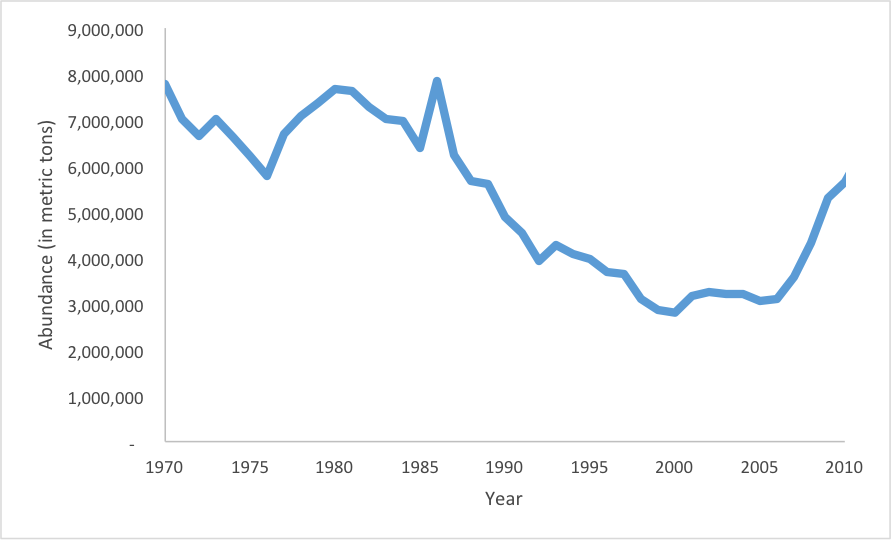Atlantic cod have been emblematic of fisheries problems, with the 1992 collapse of the Northern cod stock in Canada setting the stage for the last 25 years of concern surrounding status of cod stocks. Mark Kurlansky’s book “Cod” sold over a million copies, increasing awareness and concern over cod fisheries. Further, the two U.S. cod stocks continue to be at very low abundance; an article in the Houston Press released September of 2011 stated “Atlantic cod has been fished nearly to extinction.” However, over the entire Atlantic Ocean, the abundance of cod is high and increasing (Figure 1).
The purpose of this feature is to clarify the myriad of different claims recently released regarding the current status of Atlantic cod to highlight that not all is doom and gloom, but rather a mixed story of good and bad. In other words, not all stocks are low, failing to recover, and doomed to perish. In fact, what we actually see are three broad categories of stocks: those that are doing poorly, those that are low but rebuilding, and those that are large and doing well. In researching this story, we analyzed abundance data collected by scientific institutions and interviewed a range of scientists who have been involved in cod stock assessment and management over the last 15-35 years.
The story of cod is complex; there are many different and unique stocks occupying distinct regions within the Atlantic basin that are subject to environmental factors and political influences that differ based on geographic location. “If you look at the whole picture, you see that there is no consistent whole picture…Every single stock develops differently” says Chris Zimmermann. “Stock dynamics are quite different from area to area, so a big picture is difficult to get a handle on because there isn’t one,” agrees Coby Needle. Further, “they all have very different management histories and scenarios in terms of their status” says Steve Murawski.
Read the full report here:
Read the full report here:
